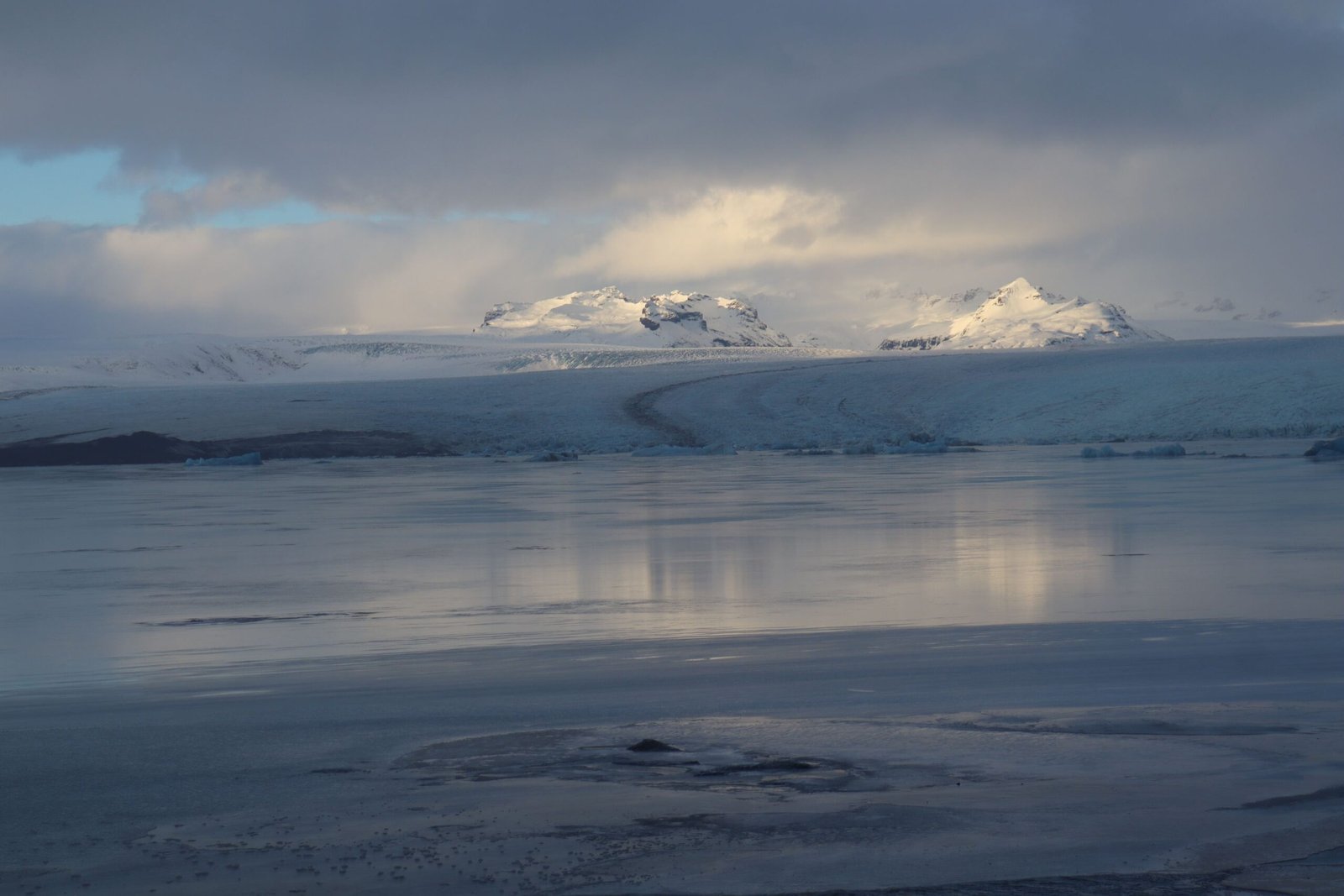15 Iceland Travel Tips for Winter You’ll Be Glad You Know
There’s something about Iceland in the winter, from the frozen waterfalls to the snow-covered lava fields, that feels like you’re visiting another planet.
But if you’re planning your winter trip to Iceland and feeling a mix of excitement and panic – asking yourself things like “how cold is it really?” “is it even safe to do that road trip?” “what about the weather?!” – then you’re in the right place!
This blog post is packed with all of the Iceland travel tips for winter I wish someone had told me before my first solo trip in January, to help you feel prepared and genuinely excited for your trip!
During my solo trip to Iceland, I spent 5 days exploring Iceland’s South Coast, Golden Circle and Snaefellsnes Peninsula, through snowstorms, icy roads and gale-force winds!
So I’ve definitely learned a thing or two about what actually makes a winter trip to Iceland go smoothly (and what doesn’t!)
And if you’re a solo female traveller dreaming of seeing those majestic glaciers up close, soaking in the Blue Lagoon, or maybe even chasing the Northern Lights – but want to actually enjoy the trip instead of stressing about logistics – this one’s especially for you!
Let’s get into the 15 tips that’ll make your Iceland winter trip easier, safer and more magical!
Disclaimer: Some of the links on this blog are affiliate links. That means if you click on one and make a purchase, I may earn a small commission – at no extra cost to you. I only recommend products, places and services I genuinely love and use on my own solo travels. Thank you for supporting my adventures so I can continue to provide free content on this blog! 💛
The Reality of Visiting Iceland in Winter
I’m gonna be honest, visiting Iceland in winter is not always like those dreamy TikToks of people soaking in the Blue Lagoon under the Northern Lights.
Instead, Iceland in winter is wild and unpredictable. Incredibly beautiful, but also incredibly challenging.
(Think short daylight hours, strong winds that can literally knock you off your feet, road closures that appear out of nowhere, and tour cancellations.)
But if you visit Iceland in winter with realistic expectations and the right mindset, it will also (in my experience!) be the most magical and beautiful solo trip you’ll ever take!
When I spent 5 days exploring Iceland in January (you can read my full 5 days in Iceland itinerary here), I quickly learned that winter runs on its own schedule, with cancelled tours, incorrect weather apps and ever-vanishing daylight.
But I also learned that with some flexibility (and, I’m gonna be real, a good sense of humour!!), Iceland will reward you with frozen waterfalls, snow-covered lava fields, powerful geysers and maybe even those infamous Northern Lights!
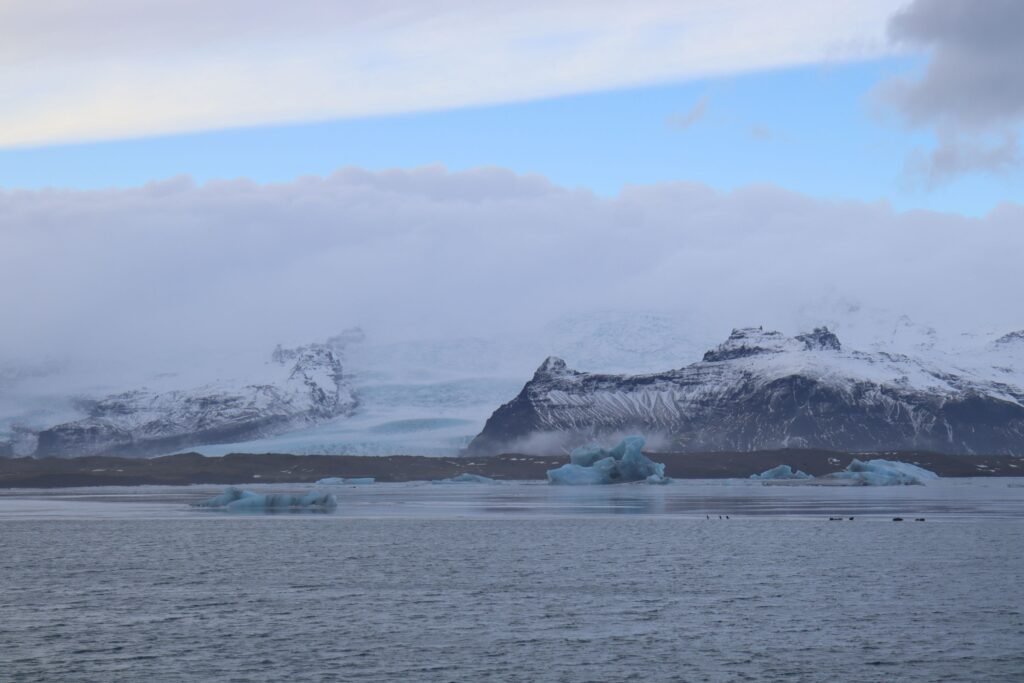
Is It Worth Visiting Iceland in Winter?
Absolutely, yes! But it does depend on what kind of traveller you are, because Iceland in winter definitely isn’t for everyone, and that’s ok.
If you’re hoping for the perfect road trip, plenty of time for sightseeing, beautiful weather, and every attraction open, winter in Iceland definitely isn’t the season for you.
But if you are dreaming of a quieter, less touristy experience, with beautiful snowy landscapes, powerful weather, and the chance to see the Northern Lights dance across the sky, keep on reading!
15 Iceland Travel Tips For Winter
1. Plan Around the Weather
Iceland does winter to extremes, with biting minus temperatures, fierce winds, icy rain, and sudden snowstorms that can arrive with little to no warning.
So, the first of the Iceland travel tips for winter I wish I knew is: always respect the weather.
Pack smart, with waterproof everything (boots, coat, gloves, phone/camera cover), and also layer up like a pro. Merino wool base layers are a game-changer here!
Apart from packing, always stay up to date with live weather reports and conditions through SafeTravel.is and Road.is.
These sites are run by the local authorities and are updated constantly.
Download/bookmark them before you travel so they’re always available to you. This kind of information could literally save your trip (and has also saved tourists’ lives countless times).
Katie’s Top Tip: Also build flexibility into your itinerary. Don’t stack your schedule so tightly that one cancelled tour ruins your trip, and always plan indoor backups, for example, a visit to the Perlan Museum, for stormy days.

2. Choose Your Base Wisely
If it’s your first time in Iceland, base yourself in Reykjavik city centre.
It’s safe, walkable and is in the perfect location for easy winter day trips.
From here, you can join small-group tours to see the famous Golden Circle, the breathtaking South Coast, the majestic Jökulsárlón Glacier Lagoon, or even the Snaefellsnes Peninsula –without worrying about navigating icy roads alone.
Reykjavik also has the cosiest cafe culture that’s perfect for solo travellers!
In my experience, there’s nothing better than warming up with a cinnamon bun at Brauð & Co after a day of exploring.
But where you stay in Reykjavik city centre really depends on your budget and what kind of vibe you’re looking for.
For solo travellers, I recommend:
- Budget: Kex Hostel – Social but relaxed accommodation, with a great bar for meeting fellow travellers, and beautiful sea views.
- Mid-range: Center Hotels Plaza – This is where I stayed! It’s central, comfortable, and also has a great free breakfast! Plus, the staff were so kind and helpful, moving my booking at no cost when my arriving flight got cancelled last minute.
- Splurge: The Reykjavik EDITION – This hotel is beautiful, with sleek, Scandinavian design and incredible views across the harbour. There’s also a spa, valet parking if you’re self-driving, and it’s within easy walking distance from everything.
Katie’s Top Tip: Choose accommodation with breakfast included and a supermarket nearby. In winter, daylight is limited and the weather is super unpredictable, so having easy food options saves time and money.

3. Be Smart About Driving
While those road trips on TikTok might look glamorous, driving in Iceland in winter is not for the faint-hearted!
Local roads are prone to dangerous black ice, visibility can drop fast when weather or storms roll in, and some routes even close completely during the winter.
So I chose to skip the stress and book small-group guided tours for everything – and honestly, it was the best decision I made.
The local drivers and guides know the roads, understand the weather, and take care of all the logistics for you, so you can actually relax and enjoy the views instead of white-knuckling the wheel all along Route 1!
The tours I personally took (and highly recommend!) during my 5 days in Iceland in January were:
- From Reykjavik: Golden Circle, Kerid Crater & Blue Lagoon Minibus Tour
- From Reykjavik: Iceland South Coast Small-Group Adventure
- From Reykjavik: Jökulsárlón Glacier Lagoon and Diamond Beach Tour
- From Reykjavik: Snaefellsnes Peninsula and Kirkjufell Small-Group Tour
But, if you are set on self-driving, make sure you rent a 4×4 with winter tyres.
Also, check the road conditions on Road.is before you travel and download offline Google Maps in case the signal fails you in rural areas.
Katie’s Top Tip: For most solo travellers, I genuinely recommend joining small-group tours instead of driving, as they’re safe, social, and surprisingly comparable on price to renting a car, once you factor in fuel and insurance!

4. Dress in Layers (Forget Fashion!)
Impractical fashion just isn’t a thing in Iceland.
And trust me, the wind and/or rain will humble even the most carefully planned outfit if it is impractical!
The key to dressing for winter in Iceland is layers:
- Start with a merino wool base layer (top and leggings or tights)
- Add a warm fleece or wool jumper
- Then finish with a waterproof and windproof shell (coat at a minimum, often you’ll need waterproof trousers too)
- Finish off the outfit with merino wool socks, insulated snow boots, touchscreen gloves, a hat and a scarf
This way, you can easily adjust your outfit depending on whether you’re braving the elements on the Snaefellsnes Peninsula or sitting on the warm tour bus!
Your body temperature will change constantly as you move between outdoor and indoor spaces, so being able to take off layers without freezing or overheating makes a huge difference!
Katie’s Top Tip: If you don’t already own quality winter gear, you can rent it in Reykjavik instead of buying new. Iceland Cover is a popular choice for this. It’s budget-friendly, eco-conscious, and means you won’t be lugging heavy outerwear home. (So more room for souvenirs!!)

5. Stay Flexible
This is the biggest thing I want you to know before visiting Iceland in winter: your plans will change.
Flights get delayed, tours are rescheduled or even cancelled due to weather, and the daylight disappears much faster than you would expect.
When I visited in January, my flight out to Reykjavik from London was cancelled at the last minute due to strong winds. So I had to think on my feet, grab a last-minute airport hotel, beg my hotel in Reykjavik to move my booking across by a night, and then catch the first available flight the next morning!
Luckily, because I’d built flexibility into my itinerary, it didn’t ruin my trip – but it definitely could have.
Another example is when I was on my day trip to the Snaefellsnes Peninsula, and the tour was almost cancelled due to the winds being just below the safety limit for operation.
The moral of the story is that until something is happening, it’s never guaranteed!
This is where having a flexible, go-with-the-flow mindset really matters.
So if you’re hit by a cancellation, stay calm, reschedule what you can, and then use the free time for indoor activities, like Iceland’s National Museum, Reykjavik’s cosy cafés, or a visit to a local pool.
Don’t try to fight the winter weather in Iceland because you won’t win! Instead, embrace the season, slow down, and adapt.
Katie’s Top Tip: Always book accommodation and tours with flexible cancellation policies if you can. And before you leave home, double-check your travel insurance covers weather-related disruptions.
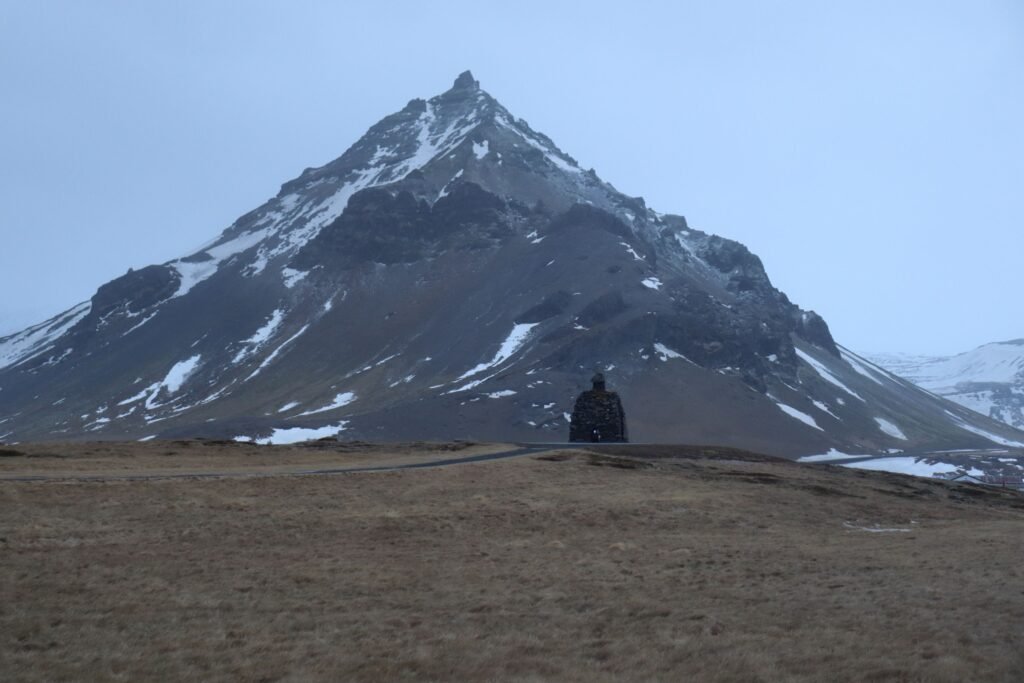
6. Respect Nature (And Locals)
Always remember that this country’s beautiful landscapes are incredibly fragile.
The moss you see on the lava fields, for example? Well, it can take over a century to grow back once damaged, so you must never walk on it.
That’s why staying on marked paths, obeying any signs or closures, and never driving off-road is essential to protecting this beautiful country for future generations.
And this respect should also extend to local Icelanders too.
Locals are generally warm and welcoming to tourists, but they’re also rightly protective of their natural environment and community.
Katie’s Top Tip: A little effort goes a long way here, like supporting local businesses rather than big chains, being thoughtful (and quiet) when walking back late at night, or learning a few phrases in the local language.

7. Don’t Make It All About the Northern Lights
Okay, I get it. The northern lights are on everyone’s bucket list. Right?
But they’re never, ever guaranteed, even in peak season.
During my trip to Iceland in January, I checked every aurora forecast, joined a Northern Lights tour that stayed up till 3am in a freezing car park, scanning the sky… and saw nothing but a fuzzy orange cloud.
Exhibit A:
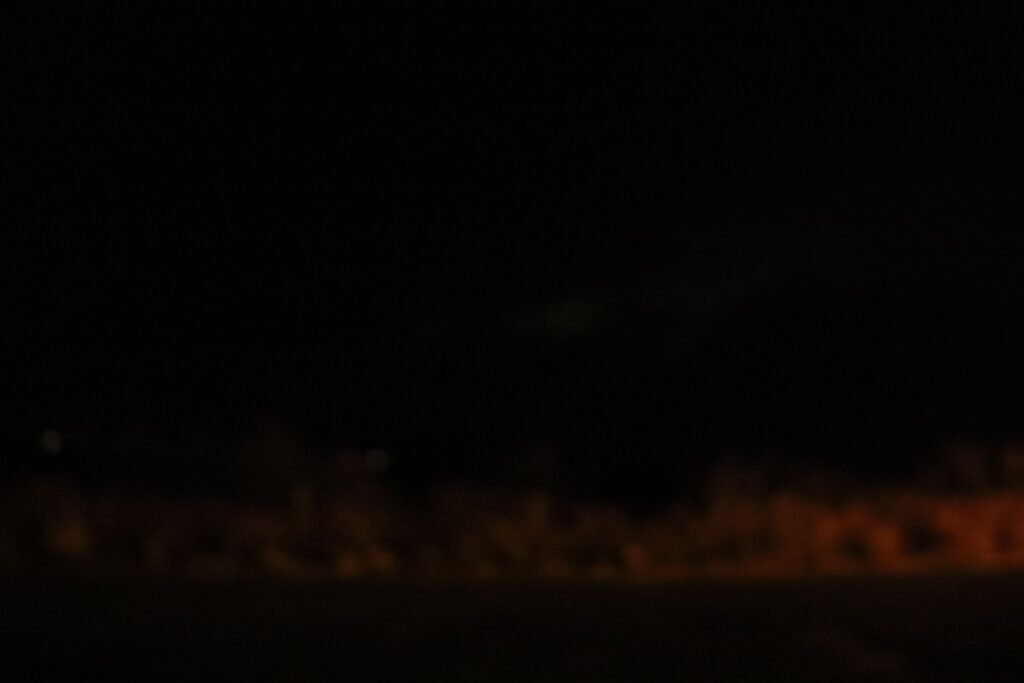
Yes, I was disappointed.
But you know what? At the end of the day, it didn’t matter because I’d had so many other magical experiences that it didn’t spoil my trip at all.
Treat the Northern Lights as a bonus on top of an already amazing trip, not the main event.
There’s so much magic to be experienced in Iceland that doesn’t depend on the sky cooperating, like black sand beaches, icy waterfalls and huge lava fields.
So, while you should definitely check the aurora forecast and keep an eye out (I’ve since seen the lights in Norway, so I can tell you they’re well worth seeing!), don’t pin your entire trip on them.
Katie’s Top Tip: If you really want to maximise your chances, book a small-group northern lights tour early in your trip rather than the end, as most operators will let you rebook for free if you don’t see them.
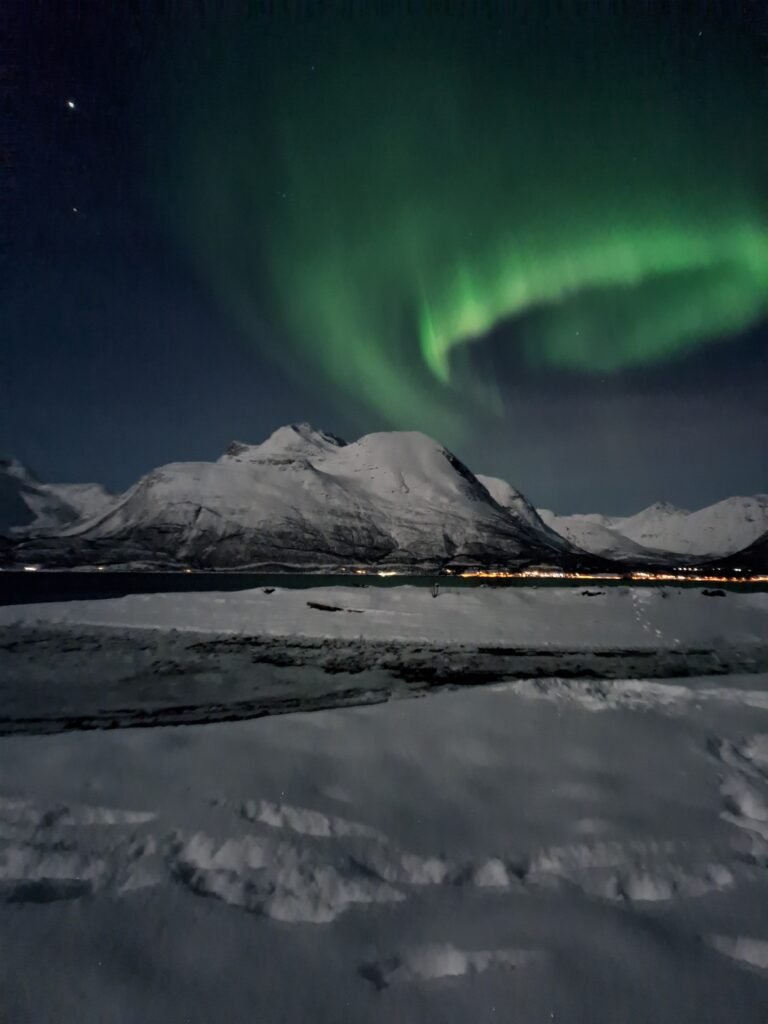
8. Don’t Try to See the Whole Country
One of the most common mistakes first-time visitors make is trying to cram the entire Ring Road into a short winter trip.
In short: please don’t!
Iceland might look small on a map, but winter travel is slow.
With limited daylight (only around 5 hours in December) and unpredictable weather conditions, you’ll enjoy your trip so much more if you focus on just one or two regions and do it well.
I recommend basing yourself in Reykjavik and exploring nearby highlights like the Golden Circle, the South Coast, and the Snaefellsnes Peninsula.
You’ll still see some of the prettiest places in Iceland (waterfalls like Skógafoss, volcanic black sand beaches, and even mighty glaciers!), without exhausting yourself.
Katie’s Top Tip: If you want ideas for how to plan your winter trip to Iceland, my 5 Days in Iceland Itinerary and Prettiest Places in Iceland guides break down exactly what’s worth prioritising (and what you can skip!)

9. Accept The Limited Daylight
The daylight hours in Iceland in winter are ridiculously short.
In December, you might only get about 4–5 hours of proper sunlight (and only if the weather cooperates!) a day.
It definitely feels strange at first. I know when I was watching the sunrise at 10am over the Golden Circle, my body clock felt like it had gone rogue!
But honestly though? It’s just part of Iceland’s magic!
The low, blue light makes everywhere look so stunning, and those long nights are perfect for chasing the Northern Lights.
But if you’re visiting Iceland for the first time, this is one of the biggest mindset shifts you need to make, compared to travelling anywhere else in Europe…
You’re not going to fit in as much sightseeing as you would in summer.
So instead of rushing, plan your sightseeing around the daylight window (roughly 11am–3pm during midwinter) and use the dark hours for indoor experiences.
Katie’s Top Tip: Download the Golden Hour app before you go, as it will tell you exactly when sunrise, sunset, golden hour and blue hour will happen each day so you can time your sightseeing. (Or if you’re on a small group tour, they’ll handle this for you!)
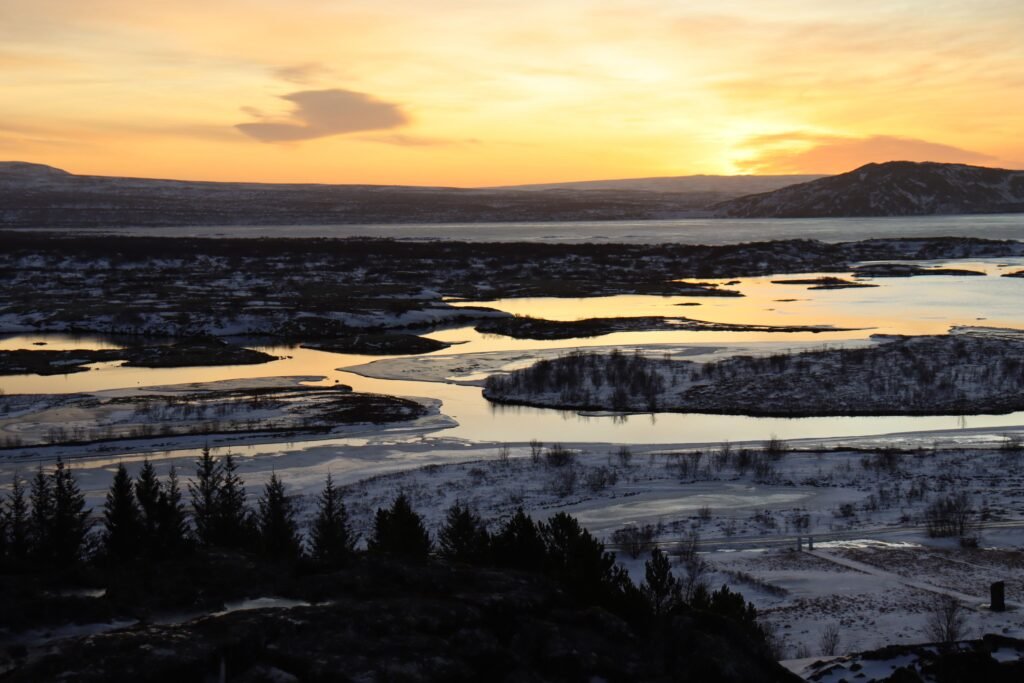
10. Save Smart
Iceland is stunning, but your bank balance might just cry when it sees the prices!
Food, fuel and accommodation all add up fast, especially if you’re travelling solo and have no one to split the costs with.
But don’t panic, because you absolutely can save in all the right places and then splurge where it truly matters.
For example, skip the overpriced hotel breakfast (if it’s not included) and grab something from a local bakery instead. Or stay in a guesthouse with kitchen access instead of a hotel, so you can cook a few meals yourself.
If there’s one place to spend your money, make it on experiences.
Things like volcano hikes, trips to the Jökulsárlón Glacier Lagoon or a small-group Northern Lights hunt are once-in-a-lifetime experiences that are genuinely worth it!
Katie’s Top Tip: Bring a refillable water bottle (Icelandic tap water is amazing!) and stock up on food at Bonus or Kronan supermarkets to save money on lunch.

11. Embrace Hot Spring Culture
If you only take one of these Iceland travel tips for winter, let it be this: embrace the hot springs!
They’re a way of life in Iceland, with locals regularly gathering to soak, chat, and relax, no matter how freezing it is outside!
And honestly? Swimming in the steaming Blue Lagoon surrounded by snow is one of my core memories from my trip!
But of course, while there is the famous Blue Lagoon (which I loved and highly recommend!), don’t stop there.
Instead, try more hidden gems like Secret Lagoon or the Hvammsvik Hot Springs.
Katie’s Top Tip: Always pack your swimwear for a trip to Iceland in winter! You’ll definitely regret not being able to jump into a hot spring during your trip, even if it is freezing outside!

12. Stay Connected
One of the smartest Iceland travel tips for winter is to make sure you always have a reliable way to stay connected on the go.
Mobile data is strong and widely available in Reykjavik, but once you’re out in rural areas, it’s definitely a lot more patchy.
And because Iceland’s weather changes in minutes, having working mobile data is a major safety tool, not just a convenience or for posting your highlights to Instagram!
If you’re coming from the UK, check whether your provider still includes Iceland in an EU “home from home” plan, as some companies do, some don’t.
Otherwise, grab a Síminn or Nova SIM card at Keflavik Airport, or use an eSIM like Airalo so you’re instantly connected on arrival.
Katie’s Top Tip: Even with a working SIM, always download offline maps on Google Maps for your route/area before you leave reliable Wi-Fi.
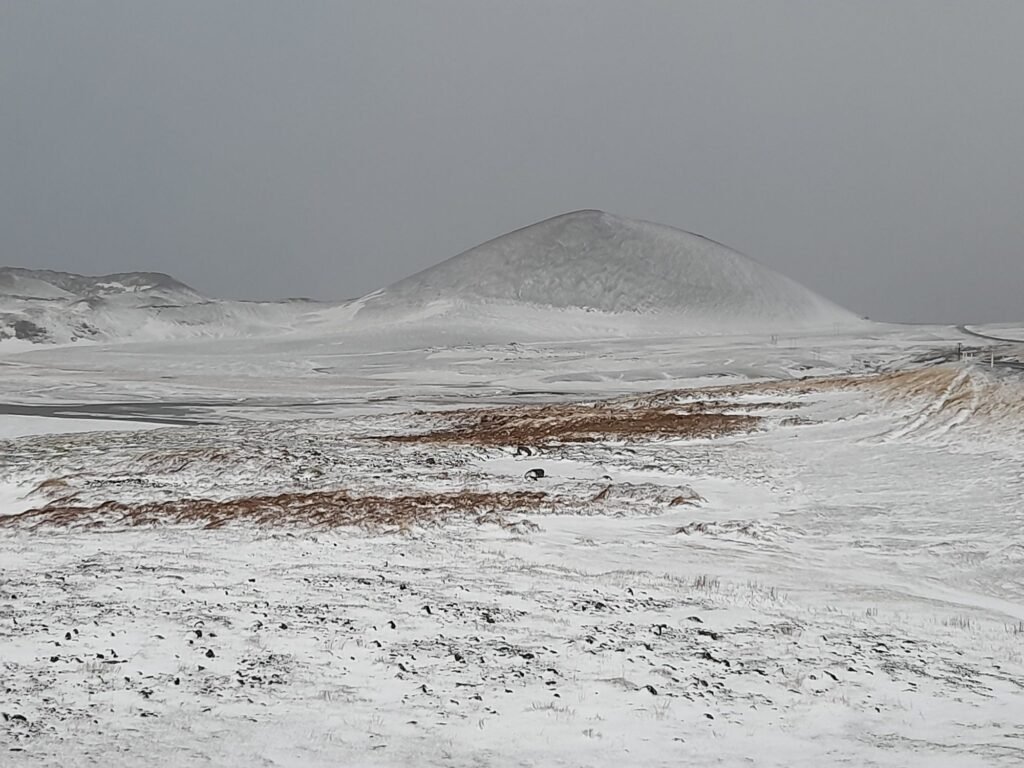
13. Common Sense For Solo Travel Safety
If you’re planning to solo female travel in Iceland, you’ll be relieved to know it’s one of the safest countries in the world, ranking #1 on the Global Peace Index.
Don’t get me wrong, that doesn’t mean Iceland is risk-free, but it does mean that your biggest risk here isn’t people, it’s nature.
I wrote a full guide on this – Is Iceland Safe for Solo Female Travellers? – but in short, the main dangers are weather, icy roads/pavements, and overconfidence.
Never underestimate the power of a snowstorm or the ability of a sneaker wave to take you off your feet.
Icelandic nature doesn’t mess around, especially in winter, so your best safety tool is common sense…
- Check the Icelandic Met Office and SafeTravel.is before you head out for weather and road updates, especially if you’re self-driving.
- Let someone you trust back home know where you’re going and when you expect to be back.
- Carry a fully charged portable charger at all times.
- Never ignore warning signs (if a road or viewpoint is closed, it’s always for a good reason).
- And while crime is rare, trust your gut instincts just like you would anywhere, staying aware of your surroundings, keeping your drink in sight, and only booking reputable tours.
Katie’s Top Tip: Download the SafeTravel Iceland app before you go. It allows you to register your travel plans, check live alerts and even use it to send an SOS if you need help.
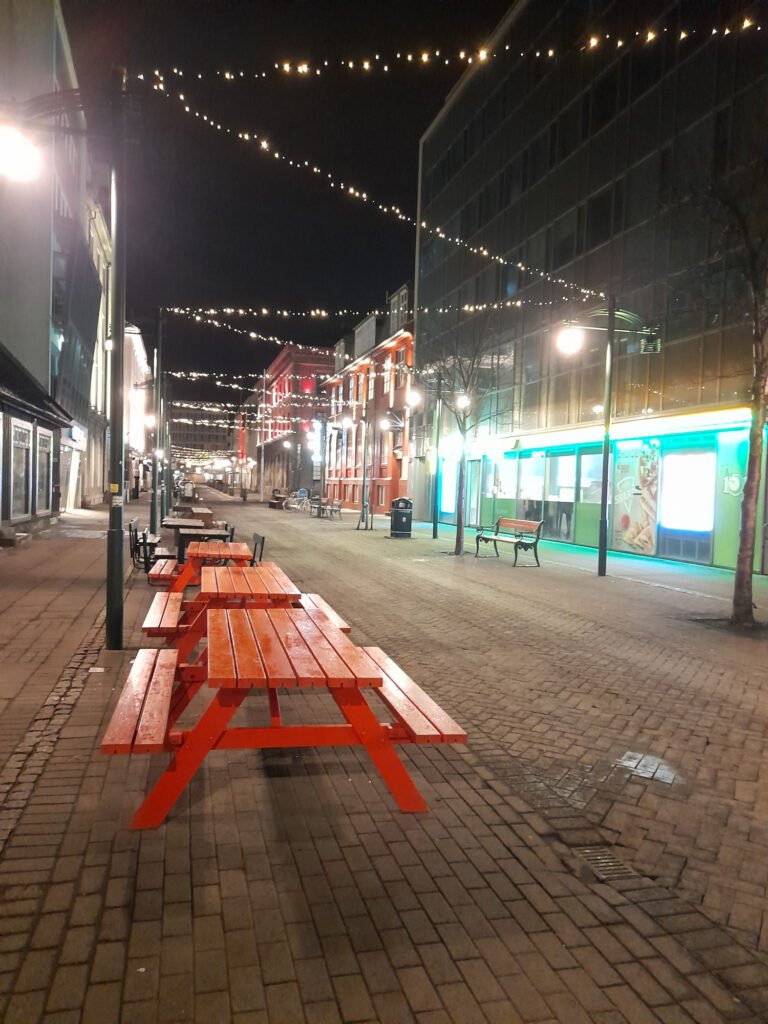
14. Don’t Underestimate the Wind Chill
You’ll hear people talk about Iceland being cold in winter, but what really surprised me was actually the wind (this definitely isn’t talked about enough!)
During my trip in January, I found that even if the weather app says it’s only -1°C, the wind chill made it feel like -10°C, and that really matters when you’re out exploring.
The key, as I said earlier, is layering like a pro.
Start with a thermal base, add a fleece or wool jumper, and top it with a windproof and waterproof outer shell.
You should also avoid cotton (I learnt the hard way that it traps moisture!) and make sure your gloves, hat and scarf are sturdy enough to actually protect you.
Bottom line: don’t just take the temperature at face value when planning your day.
Always check the wind speeds and make sure you’re prepared for the huge difference that makes to temperatures.
And if you’re renting a car, always face your back to the wind when opening doors to stop them flying open and hitting you or even snapping in extreme cases.
Katie’s Top Tip: Pack a lightweight neck gaiter. I didn’t pack this for Iceland, but I did for Norway and would never be without one again. It saves your neck and face from wind chill and is less annoying than a scarf, blowing in your face!

15. Let Go of Perfection
This is probably the most underrated Iceland travel tips for winter, and I definitely had to learn it the hard way…
Your trip won’t go exactly to plan, but that’s okay.
The weather will change five times in an hour, the road you need will suddenly close, that dream sightseeing tour will get cancelled, or the Northern Lights simply won’t show.
Iceland in winter definitely reminds you that nature calls the shots here, not your itinerary!!
So instead of trying (and failing) to fight it, try to embrace the unpredictability and spontaneity.
Katie’s Top Tip: The best way to travel in Iceland, as I said before, is to build flexibility into your plans and focus on experiencing the country and the season, rather than ticking places off your bucket list.

Final Thoughts: Is Iceland in Winter Worth It?
Iceland in winter definitely isn’t for the faint-hearted, but that’s exactly what makes it so unforgettable and magical!
It’s raw, unpredictable, and completely magical when you are well prepared and approach your trip with an open, flexible mindset, rather than a perfectionist mindset.
With these Iceland travel tips for winter, you’ll be able to explore this beautiful, wild country safely and confidently, and you’ll also leave with memories that will truly last you a lifetime!
So whether your dream is to stand under the dancing northern lights, soak in the famous Blue Lagoon while snow falls around you, or drive through snow-covered lava fields that feel like another planet, I promise that Iceland is absolutely worth visiting in winter – if you just have the knowledge and tips to make the most of such a unique experience!
So what’s next? Well, get planning and booking your dream trip to Iceland in winter!
You can check out my exact 5 Days in Iceland in Winter Itinerary here, or browse my list of 19 Prettiest Places in Iceland to get inspo for your own dream itinerary.
Happy travels!
Read More About Travel in Iceland:
- The Ultimate Iceland Solo Female Travel Guide (For 2025!)
- Iceland’s Snaefellsnes Peninsula in Winter (Without a Car!)
- How to Visit Iceland’s South Coast in Winter (Without a Car)
- 7 Unmissable Day Trips From Reykjavik in Winter (No Car!)
- How to See Iceland’s Golden Circle in Winter (Without a Car)
- Iceland’s Blue Lagoon in Winter: What to Expect (and Pack!)
- 15 Iceland Travel Tips for Winter You’ll Be Glad You Know
- How Many Days Do You Need in Iceland in Winter?
- How to Spend 5 Days in Iceland in Winter (Without A Car!)
- 19 Prettiest Places in Iceland Every Traveller Must See
- Is Iceland Worth Visiting in Winter? What You Must Know
- Is Iceland Safe For Solo Female Travellers? An Honest Guide

